Vidakovic B. Statistics for Bioengineering Sciences: With Matlab and WinBugs Support
Подождите немного. Документ загружается.

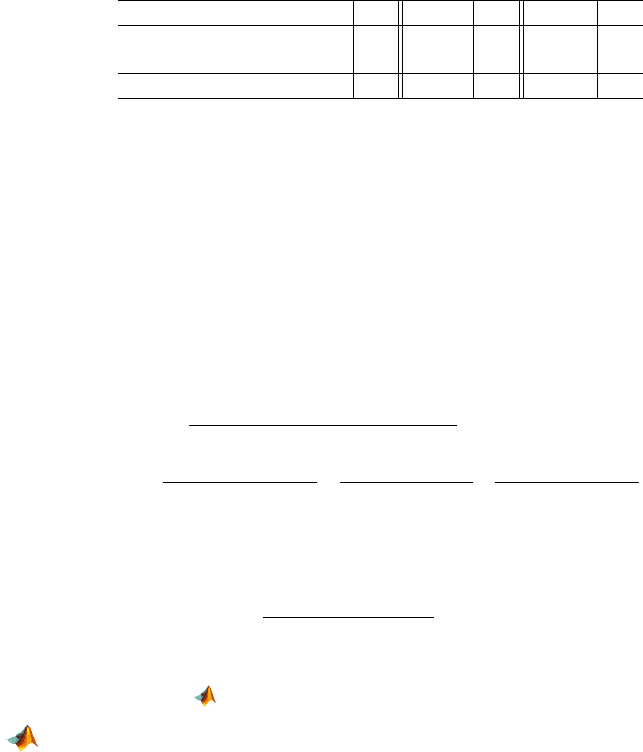
550 14 Models for Tables
It is interesting that even for sparse individual tables the χ
2
-approximation
holds as long as the sum of row totals in all tables is larger than 20, say,
P
i
(a
i
+b
i
),
P
i
(c
i
+d
i
) >20.
As in contingency tables, if the marginal sums are fixed in advance, the
subsequent inference does not concern the independence; it concerns the ho-
mogeneity of one factor within the levels of the other factor. The following ex-
ample tests for homogeneity of proportions of cancer incidence among smokers
and nonsmokers stratified by populations in different cities.
Example 14.10. The three 2
×2 tables provide classification of people from
three Chinese cities, Zhengzhou, Taiyuan, and Nanchang, with respect to
smoking habits and incidence of lung cancer (Liu, 1992).
Zhengzhou Taiyuan Nanchang
Cancer Diagnosis: yes no total yes no total yes no total
Smoker 182 156 338 60 99 159 104 89 193
Nonsmoker 72 98
170 11 43 54 21 36 57
Total 254 254 508 71 142 213 125 125 250
We can apply the Mantel–Haenszel test to decide if the proportions of can-
cer incidence for smokers and nonsmokers coincide for the three cities, i.e.,
H
0
: p
1i
= p
2i
, where p
1i
is the proportion of incidence of cancer among smok-
ers in city i and p
2i
is the proportion of incidence of cancer among nonsmokers
in city i, i
= 1,2,3. We use the two-sided alternative, H
1
: p
1i
6= p
2i
, for some
i
∈{1,2,3} and fix the type I error rate at α =0.10.
To compute
χ
2
in (14.5), we find A, E, and V . From the tables, A =
P
i
a
i
=
182+60+104 =346. Also, E =
P
i
e
i
=338·254/508+ 159·71/213+193·125/250 =
169 +53 +96.5 =318.5.
V
=
k
X
i=1
(a
i
+b
i
)(c
i
+d
i
)(a
i
+c
i
)(b
i
+d
i
)
n
2
i
(n
i
−1)
=
338 ·254 ·170 ·254
508
2
·507
+
159 ·71 ·54 ·142
213
2
·212
+
193 ·125 ·57 ·125
250
2
·249
= 28.33333 +9 +11.04518 =48.37851.
Therefore,
χ
2
=
(|346 −318.5|−0.5)
2
48.37851
=15.0687.
Because the statistic
χ
2
is distributed approximately as χ
2
1
, the p-value (via
MATLAB m-file
mantelhaenszel.m) is 0.0001.
[chi2, pval] = mantelhaenszel([182 156; 72 98; ...
60 99; 11 43; 104 89; 21 36])
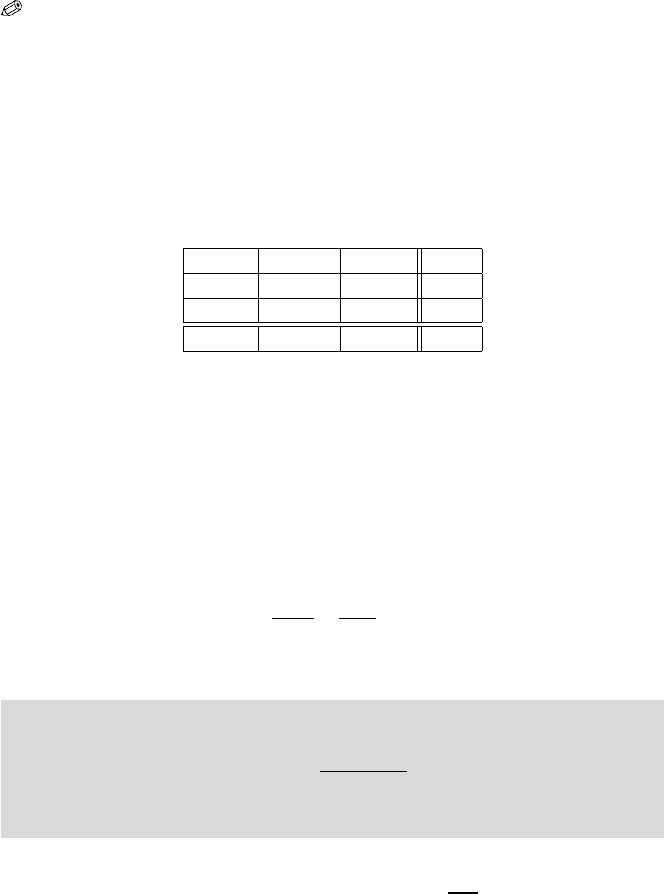
14.5 Multiple Tables: Mantel–Haenszel Test 551
%chi2 = 15.0687
%pval = 1.0367e-004
In this case, there is clear evidence that the cancer rates are not homogeneous
among the three cities.
14.5.2 Conditional Odds Ratio
Measures of association in a 2 ×2 table have been discussed in “risk” sum-
maries: risk ratio and odds ratio (Chap. 10) are examples. Suppose that k
independent classifications into a 2
×2 table are observed.
Let the rows in the ith table
Presence Absence
Group 1 a
i
b
i
a
i
+b
i
Group 2 c
i
d
i
c
i
+d
i
a
i
+c
i
b
i
+d
i
n
i
represent Groups 1 and 2 and the columns Presence/Absence of a particular
attribute. For example, Groups could be case and control subjects and Pres-
ence/Absence can be related to a particular risk factor. The tables can be strat-
ified to control for some other risk factor or demographic feature of the subjects
such as gender, age, smoking status, etc.
Then the proportion of subjects with the attribute present for Group 1
is a
i
/(a
i
+b
i
), and the proportion of subjects with the attribute present for
Group 2 is c
i
/(c
i
+d
i
).
The observed odds ratio (between the groups) for a single ith table is
a
i
/b
i
c
i
/d
i
=
a
i
d
i
b
i
c
i
.
The combined odds ratio for all k strata tables is defined as
d
OR
MH
=
P
i
a
i
d
i
/n
i
P
i
b
i
c
i
/n
i
.
The expression
d
OR
MH
was proposed in Mantel and Haenszel (1959) and repre-
sents the weighted average of individual odds ratios
a
i
d
i
b
i
c
i
with weights b
i
c
i
/n
i
.
An approximation to the variance of the log odds ratio
d
OR
MH
is given by
the RGB formula (Robins et al., 1986):

552 14 Models for Tables
Var (log(
d
OR)) =
P
i
R
i
P
i
2R
2
+
P
i
P
i
S
i
+Q
i
R
i
2RS
+
P
i
S
i
Q
i
2S
2
,
where P
i
= (a
i
+d
i
)/n
i
, Q
i
= (b
i
+c
i
)/n
i
, R
i
= a
i
d
i
/n
i
, S
i
= b
i
c
i
/n
i
, R =
P
i
R
i
,
and S
=
P
i
S
i
. If k is equal to 1, the RGB variance formula reduces to the
familiar (
1
a
+
1
b
+
1
c
+
1
d
), (p. 383).
The (1
−α)100% confidence interval for OR is
h
d
OR
MH
· exp{−z
1−α/2
ˆ
σ},
d
OR
MH
· exp{z
1−α/2
ˆ
σ}
i
,
where
ˆ
σ =
q
Var (log(
d
OR)).
(a) (b) (c)
Fig. 14.3 (a) Nathan Mantel (1919–2002), (b) William Haenszel (1910–1998), and (c) Quinn
McNemar (1900–1986).
14.6 Paired Tables: McNemar’s Test
Another type of table commonly used in dental, opthalmology, and pharmacol-
ogy trials is matched-pair tables summarizing the designs in which interven-
tions are applied to the same patient. For example, in randomized split-mouth
trials comparing the effectiveness of tooth-specific interventions to prevent de-
cay, one tooth in a subject is randomly selected to receive treatment A while
the contralateral tooth in the same subject receives treatment B. Another ex-
ample is crossover trials testing the efficacy of drugs. In this design, a patient
is randomly administered treatment A or B in the first time period and then
administered the remaining treatment in the second time period. The link
between the split-mouth design and crossover trials is apparent – the tooth
location in the split-mouth design is analogous to time in the crossover design.
The matched-pair design has statistical advantages. Because the control
and test groups are subject to the same environment, this design controls for
many confounding factors. Thus differences in outcomes between test and con-

14.6 Paired Tables: McNemar’s Test 553
trol groups are likely attributable to the treatment. Moreover, since control
and test groups receive both interventions, matched-pair studies usually re-
quire no more than half the number of subjects to produce the same precision
as parallel group studies.
McNemar’s test (after Quinn McNemar, Fig.14.3c) used for inference in
paired tables. Although data for the McNemar test resemble contingency ta-
bles, the structure of the tables is quite different and the inference is quite
different. For simplicity, assume that measurements at Before and After on
the same subject result in Positive and Negative responses. From N subjects
we obtain 2N responses, or N pairs of responses, organized as follows:
After
Positive Negative Total
Before
Positive
A B A +B
Negative
C D C +D
Total A +C B +D N
For example, A is the number of subjects (pairs of responses) where both
Before and After resulted in a positive. More generally, Before and After could
be any two different groups of matched subjects that produce binary responses.
The marginal sum A
+B is the number of positives in Before and A +C is
the number of positives in After. The proportion of positives in Before is
ˆ
p
1
=
A+B
N
, while the proportion of positives in After is
ˆ
p
2
=
A+C
N
. Let the population
counterparts of
ˆ
p
1
and
ˆ
p
2
be p
1
and p
2
.
14.6.1 Risk Differences
The McNemar test examines the difference between the proportions that de-
rive from the marginal sums and tries to infer if the two population propor-
tions p
1
and p
2
differ significantly. The difference between this test and the
test for two proportions from Chap. 10, p. 381, is that in the paired tables
the two proportions are not independent. Note that both sample proportions
depend on A from the upper left cell of the table. The inference about the dif-
ference between p
1
and p
2
involves only entries B and C from the table, since
A/N cancels.
Under the hypothesis H
0
: p
1
= p
2
, both B and C are distributed as bino-
mial
B in(B +C,0.5). In this case, EB =
B+C
2
and Var (B) =
B+C
4
. By the CLT,
Z
=
B −EB
p
Var (B)
=
B −(B +C)/2
2
p
B +C
.
Thus, after simplifying and squaring, we obtain the statistic

554 14 Models for Tables
χ
2
= Z
2
=
(B −C)
2
B +C
,
which has an approximately
χ
2
-distribution with 1 degree of freedom. Large
values of
χ
2
are critical.
When B
+C is small, it is recommended to use a continuity correction in χ
2
as χ
2
= Z
2
=
(|B−C|−1)
2
B+C
.
The confidence interval for the difference in proportions is
[
ˆ
p
1
−
ˆ
p
2
−z
1−α/2
s,
ˆ
p
1
−
ˆ
p
2
+z
1−α/2
s
]
,
where s is the square root of s
2
, and
s
2
=
ˆ
p
1
(1 −
ˆ
p
1
)
N
+
ˆ
p
2
(1 −
ˆ
p
2
)
N
+
2(
ˆ
p
11
ˆ
p
22
−
ˆ
p
12
ˆ
p
21
)
N
,
where
ˆ
p
11
= A/N,
ˆ
p
12
= B/N,
ˆ
p
21
= C/N, and
ˆ
p
22
= D/N. Note that the first
two factors in the expression for s
2
are for the case of independent proportions,
while the third factor accounts for the dependence.
14.6.2 Risk Ratios
The risk ratio is defined as
RR =
ˆ
p
1
ˆ
p
2
=
A +B
A +C
,
with variance for the log(RR),
Var (log(RR) =
1
A +B
+
1
A +C
−
2A
(A +B)(A +C)
.
14.6.3 Odds Ratios
To conduct the inference on odds ratios in paired tables, we use the Mantel–
Haenszel theory with parallel (unpaired) tables derived from a paired table.
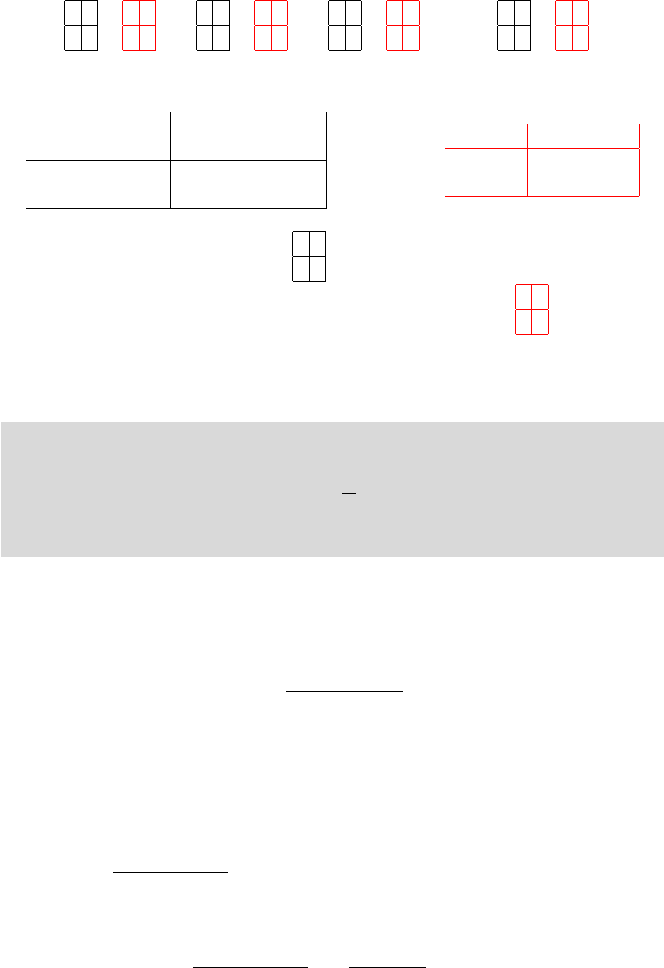
14.6 Paired Tables: McNemar’s Test 555
Any table with N paired observations generates N Mantel–Haenszel tables
1 0
0 0
7→
1 1
0 0
0 1
0 0
7→
1 0
0 1
0 0
1 0
7→
0 1
1 0
and
0 0
0 1
7→
0 0
1 1
where the first table is paired and the second (red) is parallel.
After
Positive Negative
Before
Positive
• •
Negative • •
−→
Before After
Positive • •
Negative • •
For example, 1 in the paired cell
1 0
0 0
where both Before and After are Posi-
tive is translated to 1 for each Before and After in a table
1 1
0 0
, contrasting
Positives and Negatives for Before and After. From an analysis of Mantel–
Haenszel tables one can show that the empirical odds ratio for the probabili-
ties p
1
and p
2
is
OR =
B
C
.
To find the confidence interval on the log(OR) we use the Miettinen’s test-
based method (Miettinen, 1976). First note that when H
0
is true, McNemar’s
χ
2
-statistic can be expressed as
χ
2
=
(log(OR) −0)
2
Var [log(OR)]
,
in which the only unknown is
Var [log(OR)] since log(OR) =log(B/C) and χ
2
=
(|B −C|−1)
2
/(B +C) are easy to find. By solving it for Var [log(OR)], one can
find the confidence interval for log(OR) as
[
log(OR)
−z
1−α/2
s, log(OR) + z
1−α/2
s
]
,
where s
=
p
Var [log(OR)]. Of course, the confidence interval for the OR is
derived from the above using antilogs.
Another formula for variance in a matched-pairs table comes from the
Robins, Breslow, and Greenland (RGB) estimator for Mantel–Haenszel un-
matched cases, s
=
p
Var [log(OR)] =
p
1/B +1/C. It is easy to see that the
estimator of log(OR) is consistent since when the number of tables goes to
infinity, s
→0.

556 14 Models for Tables
MATLAB function mcnemart.m computes the estimators and confidence
intervals for McNemar’s layout.
function [] = mcnemart(matr)
% input matr is matrix [A B; C D]
A=matr(1,1); B= matr(1,2); C= matr(2,1); D=matr(2,2);
if( A
*
B
*
C
*
D==0 )
matr = matr + 0.5;
end
%
N = A + B + C + D;
%
p1 = (A + B)/N; %prob row
p2 = (A + C)/N; %prob column
p11 = A/N; p12 = B/N; p21 = C/N; p22 = D/N;
% risk difference
diffp1p2 = p1 - p2
delta = p11
*
p22 - p12
*
p21
s = sqrt( p1
*
(1-p1)/N + p2
*
(1-p2)/N + 2
*
delta/N )
ssel = sqrt( ((B+C)
*
N - (B-C)^2)/N^3 )
lbd = p1 - p2 - norminv(0.975)
*
s;
ubd = p1 - p2 + norminv(0.975)
*
s;
cidiff = [lbd, ubd]
% odds ratio
or1 = B/C
% miettinen approx
s2lor1 = (log(B/C))^2
*
(B+C)/((abs(B-C)-1)^2 + 0.0000001)
slor1 = sqrt(s2lor1)
lblor1 = log(or1) - norminv(0.975)
*
slor1 ;
ublor1 = log(or1) + norminv(0.975)
*
slor1 ;
miettlint = [lblor1, ublor1]
miettint = [exp(lblor1), exp(ublor1)]
% RGB approx
slor2 = sqrt(1/B + 1/C)
lblor2 = log(or1) - norminv(0.975)
*
slor2 ;
ublor2 = log(or1) + norminv(0.975)
*
slor2 ;
rgblint = [lblor2, ublor2]
rgbint = [exp(lblor2), exp(ublor2)]
% --------- exact method ------------------
df1l = 2
*
C +2; df2l = 2
*
B;
F1 = finv(0.975, df1l, df2l);
tl = B/(B+(C+1)
*
F1 );
orexactl = tl/(1-tl);
df1u = 2
*
B +2; df2u = 2
*
C;
F2 = finv(0.975, df1u, df2u);
tu = (B+1)
*
F2/(C+(B+1)
*
F2 );

14.6 Paired Tables: McNemar’s Test 557
orexactu = tu/(1-tu);
exactorci = [orexactl, orexactu]
%--------- approximate prob ---------
phat = B/(B+C);
pl = phat - norminv(0.975)
*
sqrt(phat
*
(1-phat)/(B+C)) - 1/(2
*
B+2
*
C);
pu = phat + norminv(0.975)
*
sqrt(phat
*
(1-phat)/(B+C)) + 1/(2
*
B+2
*
C);
intor = [pl/(1-pl), pu/(1-pu)]
Example 14.11. Split-Mouth Trials for Dental Sealants. Randomized split-
mouth trials (RSM) are frequently used in dentistry to examine the effective-
ness of preventive interventions that impact individual teeth as opposed to the
whole mouth. For example, to examine the effectiveness of dental sealants in
preventing caries, a permanent first molar is randomly chosen for the inter-
vention while its contralateral tooth serves as the control. Because the control
and test teeth are subject to the same oral environment, this design controls
for many confounding factors such as diet, tooth morphology, and oral hygiene
habits. Thus differences in outcomes between test and control teeth are likely
attributable to the treatment. Because of this pairing, adequate power may be
achieved with a smaller sample size than if the teeth were independent.
Forss and Halme (1998) report results of a split-mouth study that started
in 1988 with 166 children, with the goal of assessing tooth-sealant materials.
Participants were children from Finland, aged 5 to 14 years (mean age 11
years). To be included in the study, children had to have a contralateral pair
of newly erupted, sound, unsealed permanent first or second molar teeth.
Interventions on the occlusal surfaces of sound first or second permanent
molars involved glass ionomer Fuji III sealant as a treatment and third-
generation, resin-based, light-cured Delton sealant as control. The results are
recorded at the 7-year follow-up involving 97 children (the dropout rate was
42%).
Control (Resin)
Caries No Caries Total
Treatment (Fuji III)
Caries
8 15 23
No Caries
8 66 74
Total 16 81 97
Risk differences and risk and odds ratios with confidence intervals are ob-
tained by the MATLAB program
mcnemart.m. Several approaches to con-
fidence intervals (exact, approximate RGB, approximate Miettinen) are pre-
sented. The odds ratio is 1.8750, the exact 95% confidence interval for OR is
[0.7462, 5.1064], and three approximations are
miettint = [0.7003, 5.0198],
rgbint = [0.7950, 4.4224], and intor = [0.7724, 6.6080].
The complete output from
mcnemart.m is
mcnemart([8, 15; 8, 66])
%
%diffp1p2 = 0.0722
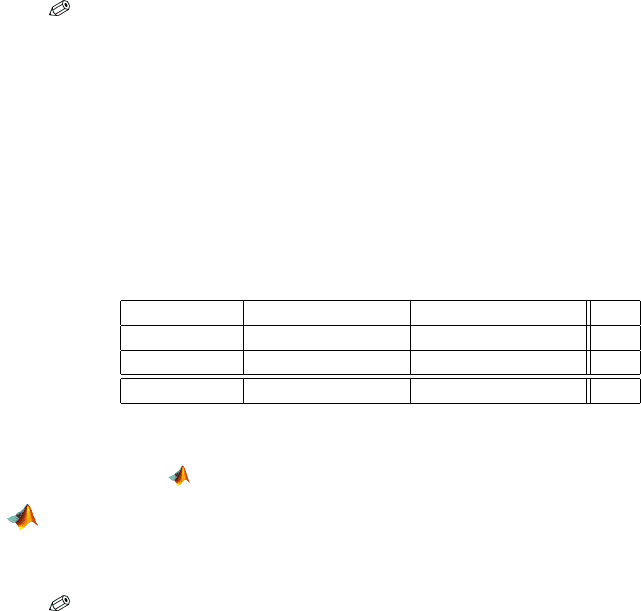
558 14 Models for Tables
%delta = 0.0434
%s = 0.0646
%ssel = 0.0489
%cidiff = -0.0545 0.1989
%or1 = 1.8750
%s2lor1 = 0.2525
%slor1 = 0.5025
%miettlint = -0.3562 1.6134
%miettint = 0.7003 5.0198
%slor2 = 0.4378
%rgblint = -0.2295 1.4867
%exactorci = 0.7462 5.1064
%intor = 0.7724 6.6080
Example 14.12. Schistosoma Mansoni. Schistosoma mansoni is a parasite
that is found in Africa, Madagascar, parts of South America (such as Venezuela
and Brazil), Puerto Rico, and the West Indies. Among human parasitic dis-
eases, schistosomiasis ranks second behind malaria in terms of socioeconomic
and public health importance in tropical and subtropical areas. Some estimate
that there are approx. 20,000 deaths related to schistosomiasis yearly. Sleigh
et al. (1982) compare results of one Bell and one Kato-Katz examination per-
formed on each of 315 stool specimens from residents in an area in northeast-
ern Brazil endemic for schistosomiasis mansoni. The following table, discussed
also in Kirkwood and Sterne (2003), summarizes the findings.
Kato-Katz Positive Kato-Katz Negative Total
Bell Positive 184 54 238
Bell Negative 14 63 77
Total 198 117 315
Is the probability of detecting Schistosomiasis mansoni the same for the
two tests? Find the odds ratio and its approximate confidence intervals. From
the output of
mcnemart.m we have
%or1 = 3.8571
%miettint = 2.2045 6.7488
%exactorci = 2.1130 7.5193
%intor = 2.2327 8.7633
Example 14.13. Testing for Salmonella. Large discrepancies are usually
found when different ELISAs for the diagnosis of pig salmonellosis are com-
pared. Mainar-Jaime et al. (2008) explored the diagnostic agreement of two
commercial assays: (i) Salmonella Covalent Mix-ELISA (Svanovir), positive
OD% =20% denoted as test A and (b) Swine Salmonella Antibody Test Kit
(HerdCheck), positive OD% =10% as test B, for the detection of antibodies to
Salmonella spp. in slaughter pigs.
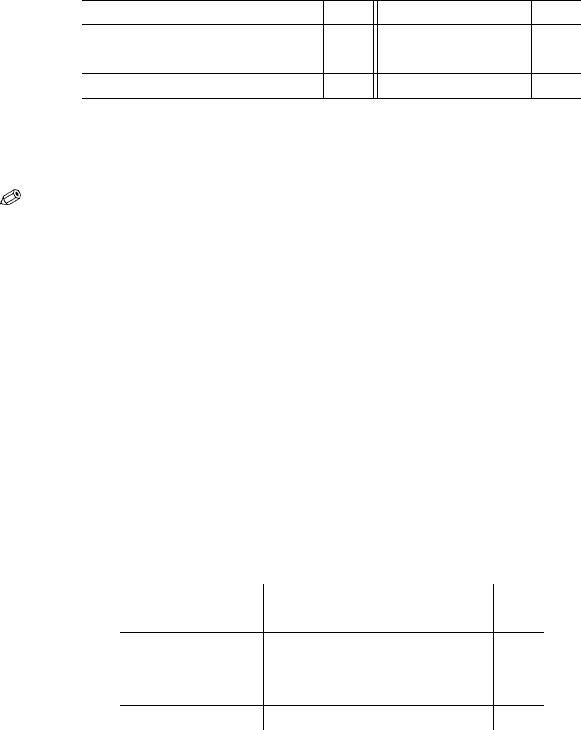
14.6 Paired Tables: McNemar’s Test 559
Populations of pigs slaughtered in abattoirs from Saskatchewan, Canada.
Population 1: animals from farms marketing
<10,000 pigs/year.
Population 2: animals from farms marketing 10,000 pigs/year.
Population 1 Population 2
Test B + Test B – Total Test B + Test B – Total
Test A + 11 16 27 2 5 7
Test A – 6 119
125 1 72 73
Total 17 135 152 3 77 80
From McNemar’s χ
2
-test one concludes that test A (at either OD% = 40%
or OD% =20%) significantly differs from test B in the proportion positive at
α =0.05.
14.6.4 Multicategorical Paired Tables: Stuart–Maxwell
Test*
A natural generalization of the McNemar test is a design in which there are N
matched pairs where each response can be classified into k
>2 different cate-
gories. We will be interested in the equality of proportions for categories in the
two populations that form the paired responses. For simplicity we discuss only
the case of k
= 3. A general test is given in Maxwell (1970) and implemented
as MATLAB function
stuartmaxwell.m.
Assume that paired responses come from Before and After and each re-
sponse may result in one of the three categories: Positive, Neutral, and Nega-
tive.
After
Positive Neutral Negative Total
Positive n
11
n
12
n
13
n
1·
Before Neutral n
21
n
22
n
23
n
2·
Negative n
31
n
32
n
33
n
3·
Total n
·1
n
·2
n
·3
N
Notice that the table counts matched pairs, for example, n
23
is the number
of cases where Before resulted in neutral and After resulted in negative. Thus,
again we have a total of 2N responses organized into N matched pairs.
Denote by p
i j
the population proportion of subjects in population i (one of
Before, After) that are classified as j (one of Positive, Neutral, or Negative).
The null hypothesis of interest is
H
0
: p
11
= p
21
, p
12
= p
22
, and p
13
= p
23
.
